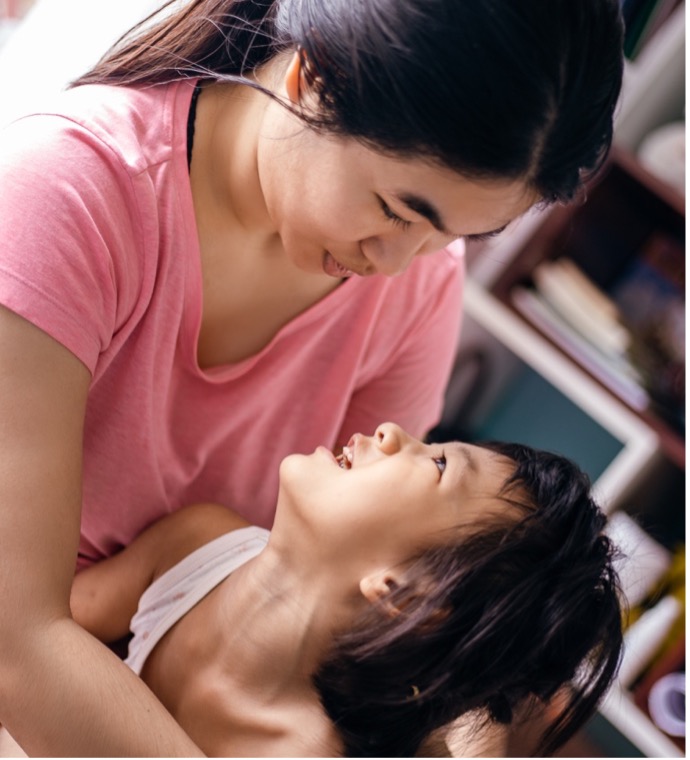
In many countries, parents of children with cerebral palsy often struggle to find information on how to support their children to improve functioning and independence. In this story, one parent describes her experience searching for information which led her to contribute to the community.
Nguyen Phuong Ha knew something was different with her daughter, Pika, soon after she was born in Ho Chi Minh, Viet Nam in 2012. Her baby was born premature and found to have a brain haemorrhage three days after birth.
“I just felt my daughter was not ok,” recalled Phuong. “But when I asked the doctor, he said, ‘Oh, premature babies are like this. There will be development delays. It’s normal.’”
In the months that followed, Phuong brought her baby at her own cost to many other doctors, but none offered support, guidance or a diagnosis. She searched for information but didn’t come up with anything. So, as a biology researcher working with a research institute, she began her own research. After 11 months, she suggested to a doctor that her daughter had cerebral palsy. The doctor agreed. But he could offer no support or a plan for treatment for her daughter.
“At that time in my country, there was not much information about cerebral palsy from public hospitals. And there was no support for parents,” Phuong said. “And because my daughter’s condition was so severe, they just said negative words.”
Building a community to support parents
With the dearth of information on cerebral palsy, and her many questions on her daughter’s health condition, she decided in 2014 to make a trip abroad to learn how children with cerebral palsy and their families were supported in other countries.
“I was amazed, because there are many therapies with a new [approach]…,” she said, adding previously, she was only aware of physical therapy, which she has now studied in a course. “I found there were many systems to support parents – equipment, therapy, information. I learnt a lot.”
Once home, realizing the scarcity of information and support from the health system for parents of children with cerebral palsy (CP), she resolved to share what she had learnt with other parents. She set up the “Superhero Family Club” group on Facebook. Within two weeks, it had 200 members. It quickly became a community for parents. She found that she shared a bond, a similar “voice inside”, with other parents.
To help her research, she studied English on YouTube. She used this knowledge to translate information into Vietnamese, which she then shared with parents. “I learnt English by myself because of my daughter. I read a lot. Now I can read documents about CP very fast,” she said.

Phuong is deputy chairwoman of the Cerebral Palsy Family Association in Viet Nam. Photo courtesy of Phuong.
The seed planted has grown to a tree
Today, a decade later, Phuong is deputy chairwoman of the Cerebral Palsy Family Association in Viet Nam, which provides support and information for parents of children with cerebral palsy. The Association has 3,000 members and 1,000 volunteers, who provide all kinds of support for the children, including a fund for parents who need help. “Everything is getting better,” she said.
She is a spokesperson for parents on cerebral palsy, interacting regularly with the medical community. She has received an award from the Viet Nam Federation of People with Disabilities for her tremendous contribution for parents of children with cerebral palsy.
Phuong has also contributed in other ways to the community. As she found no educational options available for her daughter, she decided to start a class for children with CP. “My daughter has severe CP. I found no school for her. So I decided to start a class for children with CP,” she explained.
“At the hospital, I was told that children with CP cry a lot, but in our class, the children do not cry. My daughter is very happy there – she’s 10 now and very talkative! The parents are happy too. It is just amazing, I planted a small seed and now the tree has grown up.”
A version of this story first appeared in the WHO Global report on health equity for persons with disabilities.
